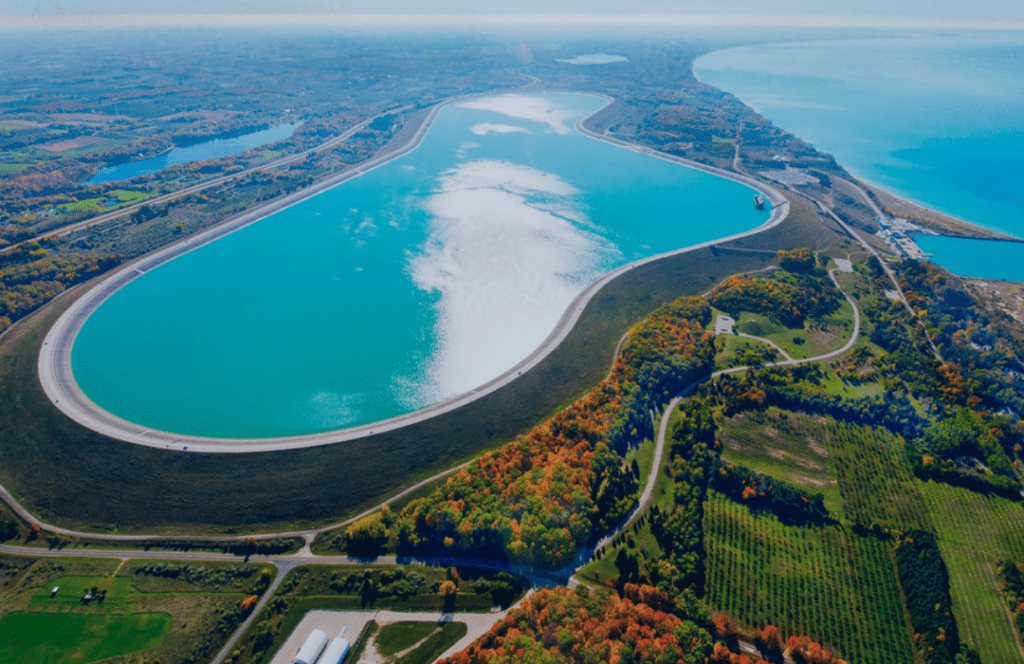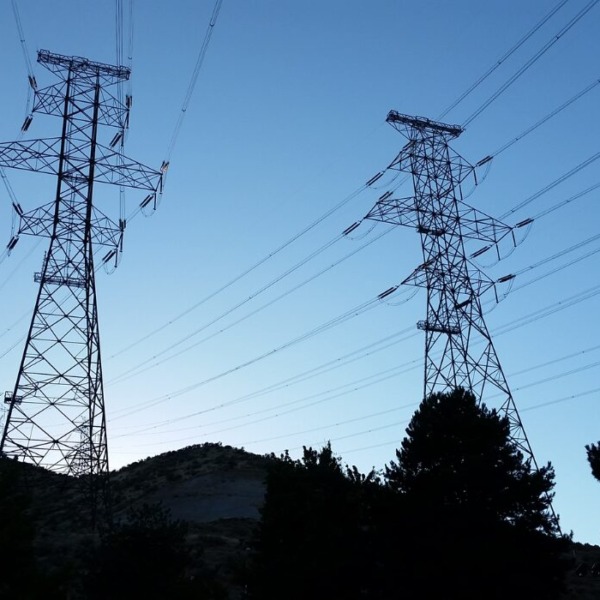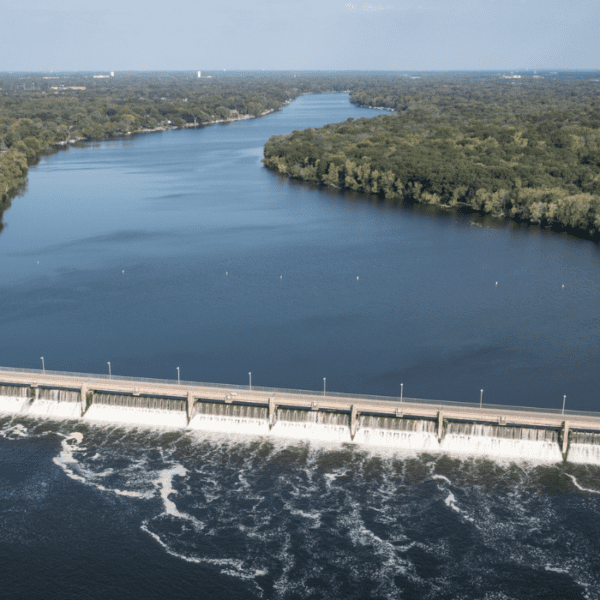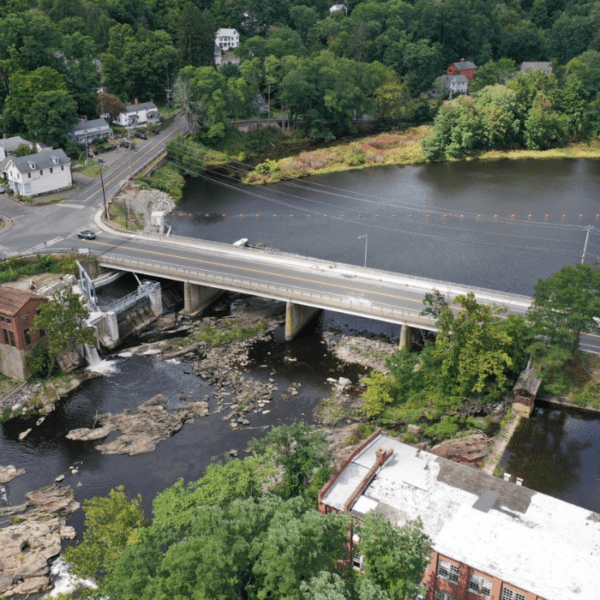As Congress debates an infrastructure bill, and the United Nation’s warns climate change is “code red” for humanity, it’s worthwhile to highlight the shovel-ready new hydropower and pumped storage in the United States.
Thanks to the great work by the U.S. Department of Energy and Oak Ridge National Lab, the hydropower development pipeline is easily accessible to the public.
A license or exemption means the project is shovel ready. (“Shovel Ready” projects still need construction authorization from the Federal Energy Regulatory Commission (FERC), which typically depends on submission of information, such as a financing plan.)
A preliminary permit means the project has been reserved to a particular developer, but has not completed the FERC’s licensing or exemption process.
Non-Powered Dams and Conduits
Non-powered dams (NPDs) and conduits are existing water infrastructure that can be retrofitted to produce clean electricity without building new dams. Combined, there are 650 MW of shovel-ready NPDs and conduits and another 120 MW with preliminary permits. Pennsylvania, Louisiana, and Alabama lead the way for NPD development, while California and Colorado lead for conduits.
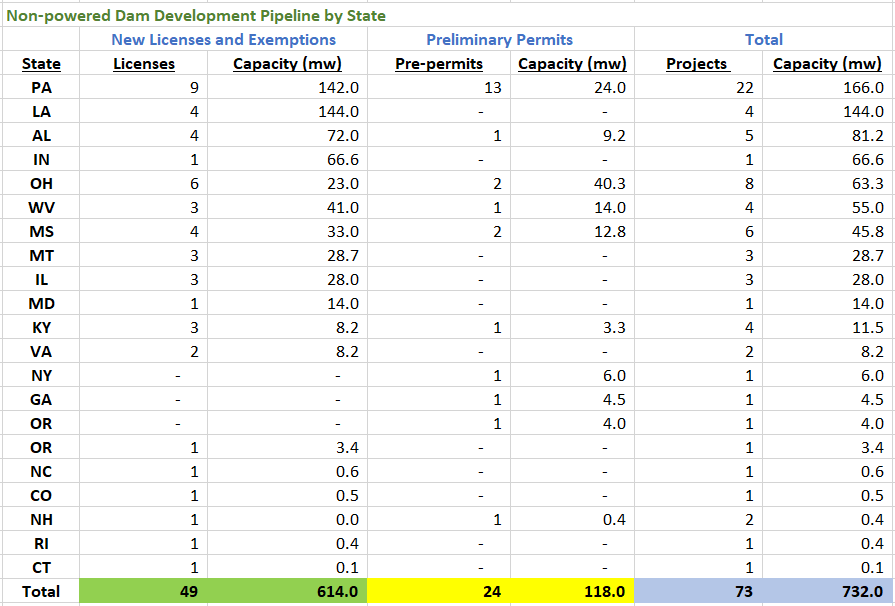
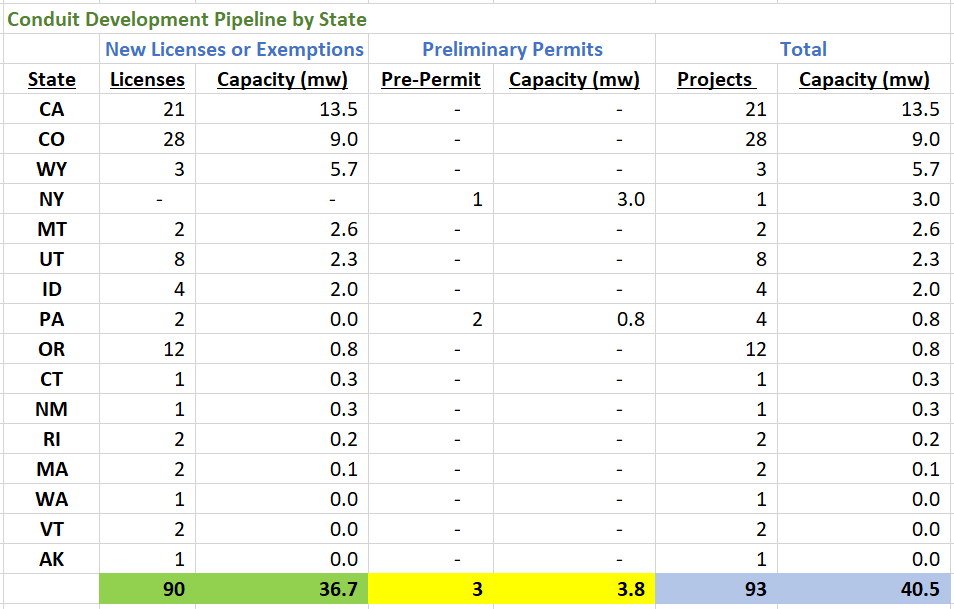
Pumped Storage
Pumped storage moves water between an upper and lower reservoir to produce and store energy like a giant water battery. The 42 existing pumped storage projects in the U.S. represent 90% of the United States’s energy storage capacity.
Most of the new proposed projects are concentrated in the western U.S.
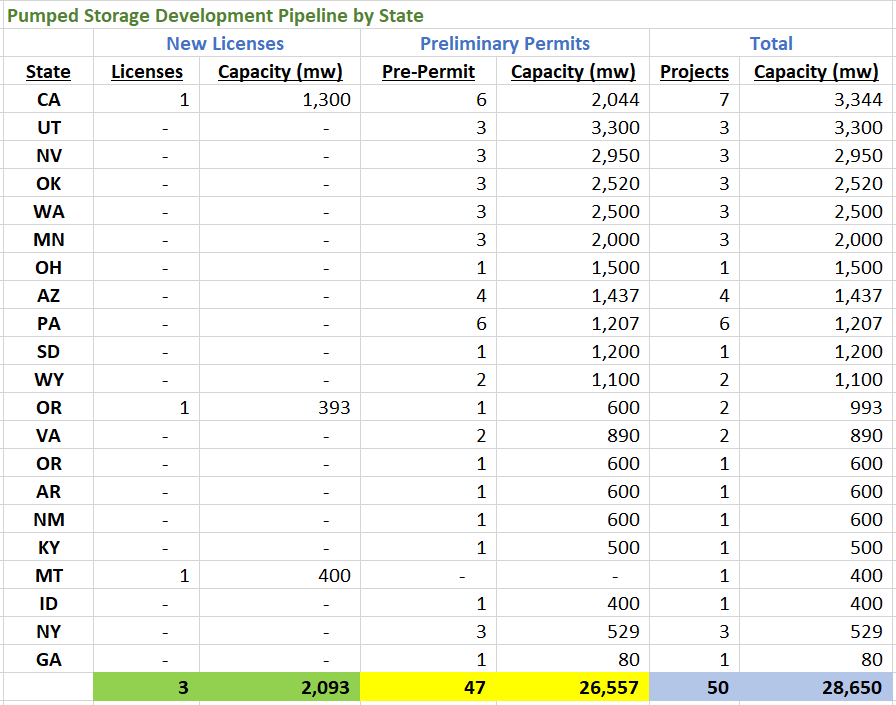
Takeaways
650 MW of hydropower and more than 2,000 MW of pumped storage would make a significant dent in global climate change. Whether or not these projects get built depends largely on whether Congress will pass an infrastructure bill that gives industry the right tools.
For projects with preliminary permits, licensing reform is necessary to construct them in a timely fashion. The two-year licensing process mandated by Congress in 2018 has proven fruitless – not a single project has been selected for this process. Licensing reform remains a topic of the Uncommon Dialogue and there are placeholders in the infrastructure bill to incorporate new language, but only if stakeholders can reach agreement.
During the upcoming Clean Currents conference + tradeshow, the Day 3 Plenary Session focuses on “Investing in Waterpower.” Financial investments are needed for the pipeline of projects described above to be developed.
The session includes a short, up-to-the-minute report by NHA’s President and CEO Malcolm Woolf on the status of the Infrastructure Bill and the Reconciliation Package. In addition, Natel Energy CEO and founder Gia Schneider will lead a discussion around how to attract investments for adding hydro to existing dams, providing storage solutions for a carbon-free grid, and developing new stream reaches in appropriate locations. Given the reality that, historically, hydro has been under-represented in the portfolios of institutional investors, the panelists will discuss why this has occurred, what can be done about it, and what innovative ways are being explored to provide financing to the sector.



